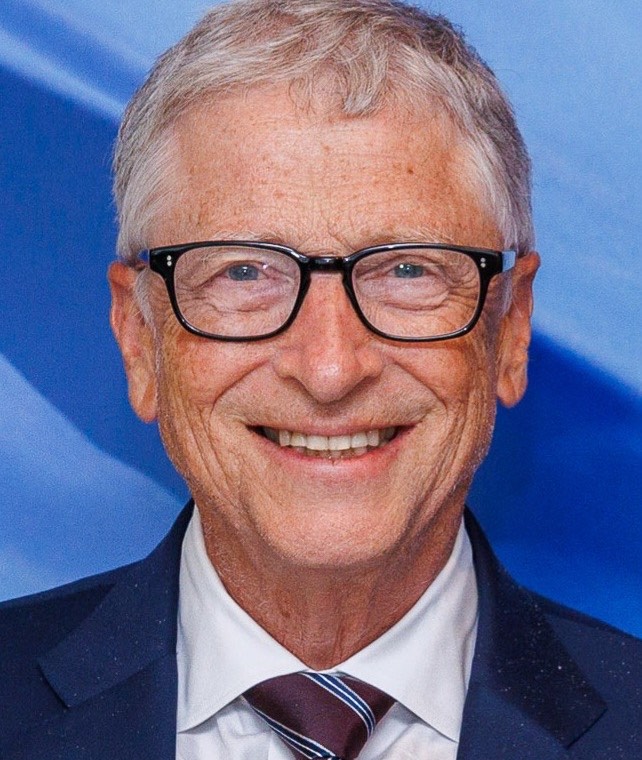Millions more people at risk of HIV in low- and middle-income countries are set to benefit from a powerful new prevention tool: a low-cost, generic version of lenacapavir, the world’s first twice-yearly injectable PrEP. Announced in New York on September 24, 2025, Chiemelie Ezeobi writes that the Gates Foundation’s new partnership with Indian manufacturer Hetero Labs aims to expand affordable access in high-burden countries,
thus bringing the world closer to ending the HIV epidemic
When scientists unveiled lenacapavir, the world’s first twice-yearly injectable HIV prevention drug, public health experts hailed it as a transformative breakthrough. For millions of people at risk of HIV infection, particularly in low- and middle-income countries (LMICs), the promise of protection with just two injections a year offered a radical shift from daily oral medication and the challenges of adherence, stigma, and patchy supply chains.
But there was always a catch: cost. Cutting-edge medicines are often out of reach for the very people who need them most. This week, that barrier took a decisive hit.
On September 24, 2025, in New York, the Gates Foundation announced a landmark partnership with Indian pharmaceutical manufacturer Hetero Labs to produce a low-cost, generic version of lenacapavir. Backed by upfront funding and volume guarantees, the deal is expected to bring the annual cost down to around $40 per patient per year after a short oral pre-treatment, a price designed with strained national health budgets in mind.
“Hetero is pleased to partner the Gates Foundation to create a pathway for the sustainable and affordable supply of lenacapavir,” said Dr. Vamsi Krishna, managing director of Hetero Group of Companies. “This collaboration reflects our commitment to ensuring access to innovative HIV medicines for patients in India and other low- and middle-income countries.”
The significance of this announcement extends far beyond India. By slashing prices and scaling up generic production, the partnership could open the door for millions more people at risk of HIV across Africa, Asia, and Latin America to access this groundbreaking prevention tool.
Why Lenacapavir Matters
Lenacapavir represents a new era in HIV prevention. Approved by the U.S. Food and Drug Administration in June and by the European Commission in August, it provides six months of protection with a single injection. Public health leaders see it as particularly promising for communities underserved by existing methods.
Daily oral pre-exposure prophylaxis (PrEP) has proven effective in preventing HIV infection, but challenges remain: stigma associated with daily pill-taking, difficulties in consistent adherence, and uneven supply. A long-acting injectable sidesteps many of these barriers.
Despite progress since 2000 in driving down HIV rates and AIDS-related deaths, 1.3 million people still acquired HIV in 2024. Worryingly, only 18% of people who could benefit from PrEP currently have access.
The modelling is striking. Studies suggest that if affordable lenacapavir reached just four per cent of the population in high-burden countries, it could prevent up to 20% of new infections. For public health advocates, that statistic underscores the urgency.
“Scientific advances like lenacapavir can help us end the HIV epidemic, if they are made accessible to people who can benefit from them the most,” said Trevor Mundel, president of global health at the Gates Foundation. “We are committed to ensuring that those at highest risk, who can least afford it, aren’t left behind.”
Building a Generics Ecosystem
The Hetero deal is not the only move reshaping the landscape. On the same day, Unitaid, the Clinton Health Access Initiative (CHAI), and South Africa’s Wits RHI announced fresh commitments with another Indian manufacturer, Dr. Reddy’s Laboratories Ltd. (DRL).
Together, these deals form the backbone of what experts describe as a “competitive generics ecosystem” for lenacapavir, crucial for driving prices down and ensuring sustainable supply.
Generic versions could reach large-scale production as early as 2027, pending regulatory approvals. The timing matters: while the first supplies of branded lenacapavir are expected to reach some LMICs by the end of 2025 through the Global Fund and PEPFAR-supported agreements, wider access will depend on affordable generics.
The Hetero agreement also includes supply of the active pharmaceutical ingredient (API), allowing other generic manufacturers to ramp up production quickly. This detail is significant, as API bottlenecks often delay or restrict drug access.
“The deals announced today on generics are a major step forward in ending the HIV epidemic,” said Kate Hampton, CEO of the Children’s Investment Fund Foundation. “They build on full value-chain investments by CIFF and others to foster a competitive market so that access to lenacapavir is affordable and reliable for all those who need it.”
A Decade of Investments Paying Off
This week’s announcements are the latest chapter in a long-running strategy. In 2024, Gilead Sciences, which developed lenacapavir, granted royalty-free licences for its production to six generic manufacturers across 120 LMICs. That decision paved the way for partnerships like the Hetero deal, by removing intellectual property barriers that so often stifle equitable access.
The Gates Foundation has been quietly preparing the ground. It has invested more than $80 million to accelerate market readiness, secure delivery pathways, and shorten the timeline for generic entry. This forms part of its broader commitment to fighting infectious diseases, a portfolio that has included catalytic support for HIV, malaria, and tuberculosis programmes worldwide.
Earlier this week, Bill Gates himself announced a $912 million pledge to the Global Fund’s 2026–2028 replenishment campaign, which aims to save 23 million lives between 2027 and 2029. That pledge reflects the foundation’s long-standing relationship with the Global Fund, which has helped cut HIV rates by more than 80 per cent in countries where it invests.
The Human Stakes
For all the policy detail and pharmaceutical manoeuvres, the story of lenacapavir is ultimately about people. In sub-Saharan Africa, adolescent girls and young women remain disproportionately at risk of HIV, accounting for over 60 per cent of new infections in the region. Many face social stigma or gender-based barriers that make consistent use of daily pills unrealistic.
A twice-yearly injection could change that equation. Community-led health organisations are already strategising how best to deliver the drug, from integrating it into antenatal care visits to offering it through mobile outreach clinics.
“People want discreet, convenient, and reliable options,” said a community health worker in Lagos who has been following the developments closely. “If you can take one injection and know you’re protected for six months, that’s life-changing.”
Looking Ahead
Challenges remain. Regulatory approvals in many LMICs could take time, and health systems will need to adapt to deliver injectable PrEP at scale. Training, logistics, and community engagement will all be critical.
But the momentum is undeniable. The combination of early branded roll-out, forthcoming generics, and international partnerships signals that the world is serious about making lenacapavir accessible.
Bill Gates himself has underscored the urgency. Earlier this year, he committed to giving away virtually all his wealth to the foundation, with a promise that it would spend $200 billion over the next two decades before winding down. The three focus areas are clear: ending preventable maternal and infant deaths, eradicating deadly infectious diseases, and lifting millions out of poverty. Ending HIV is integral to that vision.
Closing the Gap
For decades, the story of HIV prevention has been one of breakthroughs slowed by inequity: lifesaving antiretroviral drugs that arrived late, or not at all, in Africa; PrEP that remained largely confined to wealthier countries.
The lenacapavir generics deals suggest the cycle may finally be breaking. By locking in affordable pricing and preparing supply chains early, partners hope to prevent the lag that has so often defined access to innovation in global health.
“This is about more than just a new drug,” Trevor Mundel noted. “It’s about making sure that science serves everyone, everywhere, not just those who can pay.”
For the millions of people still at risk of HIV, from young women in southern Africa to marginalised communities in Asia, that commitment could mark the difference between another decade of preventable infections and a decisive step toward ending the epidemic.
And with just two injections a year, the future of HIV prevention may finally be within reach.


















Leave a comment